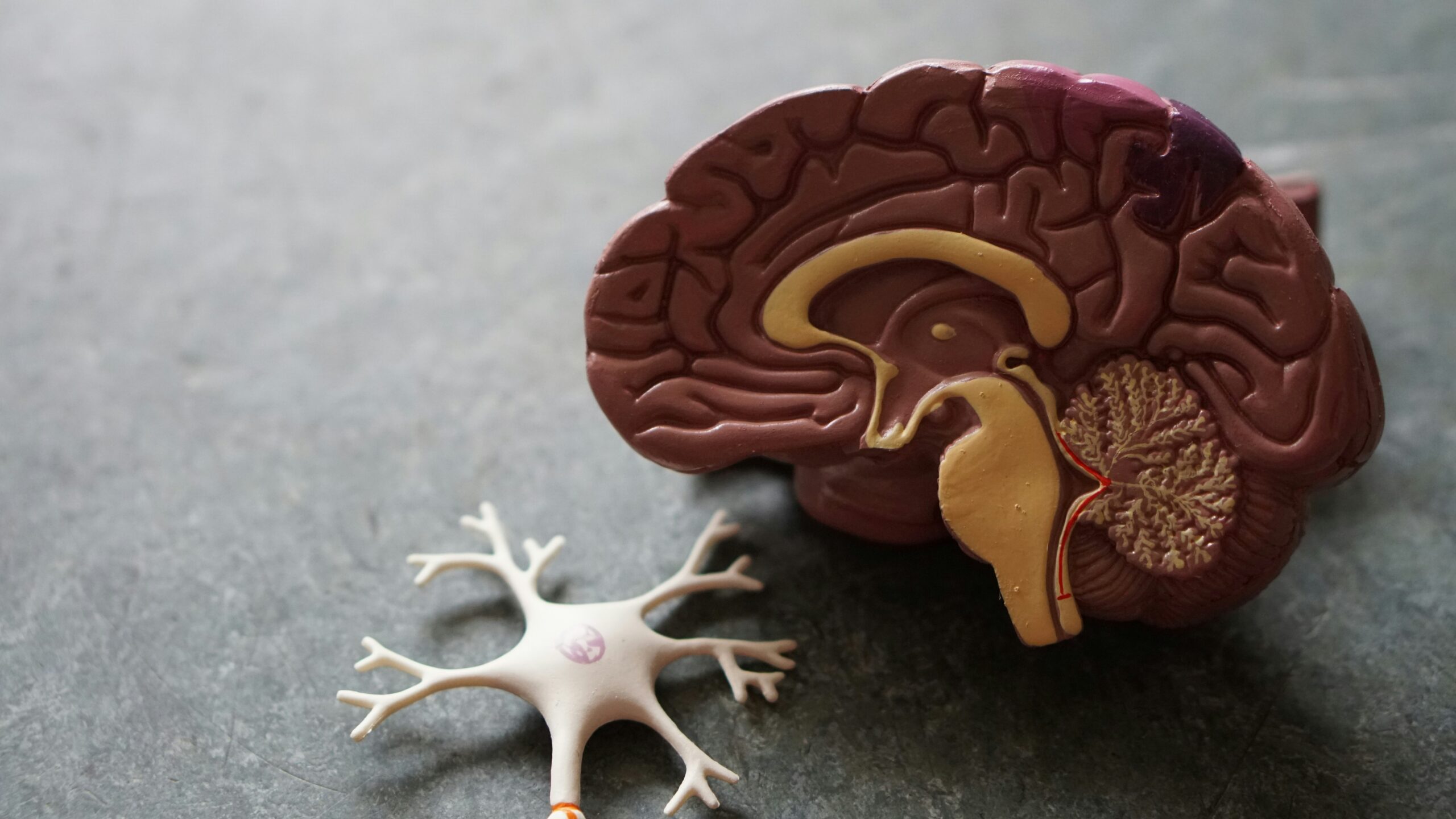
Photo by <a href="https://unsplash.com/@averey" rel="nofollow">Robina Weermeijer</a> on <a href="https://unsplash.com/?utm_source=hostinger&utm_medium=referral" rel="nofollow">Unsplash</a>
Introduction to Zoophysiology
Zoophysiology is a specialized branch of biology that focuses on the physiological processes of animals. This area of study encompasses a diverse array of topics including metabolic functions, behavioral patterns, and the anatomical adaptations that enable various species to survive and thrive in their environments. By examining these physiological traits, zoophysiologists contribute valuable insights that are critical to understanding the complexities of animal life.
The significance of zoophysiology extends far beyond mere academic interest. Its applications are prevalent across numerous disciplines, including veterinary medicine, wildlife conservation, and comparative physiology. For instance, in veterinary medicine, knowledge of animal physiology is essential for diagnosing and treating health issues in pets and livestock. Understanding physiological mechanisms enables veterinarians to develop effective treatment plans that cater to the unique requirements of different animal species.
Similarly, in the realm of wildlife conservation, zoophysiology plays a pivotal role in protecting endangered species and preserving biodiversity. By studying the physiological adaptations of animals, scientists can better understand how environmental changes affect their survival. This information is vital for developing conservation strategies that address habitat destruction, climate change, and other threats to animal populations.
Moreover, comparative physiology, a related field, allows for the examination of similarities and differences in physiological processes across species. This comparative approach provides a framework for discerning evolutionary trends and biological functions, enhancing our comprehension of the animal kingdom as a whole. Through the lens of zoophysiology, researchers can uncover the intricate relationships between anatomy, physiology, and behavior, facilitating a greater appreciation of the natural world.
Historical Development of Zoophysiology
The historical development of zoophysiology can be traced back to ancient civilizations, where the initial observations of animal anatomy and physiology were documented. Early Greek philosophers, such as Aristotle, laid the groundwork by conducting detailed studies of various species, culminating in works that described the anatomical structures of animals. These contributions were pivotal in the evolution of biological sciences, setting the stage for more systematic approaches to the study of animal physiology.
During the Renaissance, a renewed curiosity in science and observation facilitated significant advances in both anatomy and physiology. Pioneers like Andreas Vesalius challenged existing notions by performing dissections and producing more accurate representations of animal bodies in his landmark work, “De Humani Corporis Fabrica.” This era marked a shift towards empirical observation and experimentation, elements crucial in the advancement of zoophysiology as a scientific discipline.
The 19th century heralded major developments in zoophysiology, particularly with the advent of comparative physiology, which emerged as scientists began to draw comparisons between different animal systems. Notable figures, such as Claude Bernard, introduced concepts of homeostasis and experimental methods that highlighted the physiological functions of organisms in their environments. Discoveries of cellular processes by pioneers like Louis Pasteur and Gregor Mendel further enriched our understanding of animal physiology, linking genetics and environment to physiological responses.
By the late 20th century, zoophysiology had firmly established itself as a distinct discipline within biology, with advancements in technology paving the way for intensive research into the physiological adaptations of animals across diverse habitats. The incorporation of molecular biology and genomics into zoophysiological research has broadened our comprehension of the complexities inherent in animal life, ultimately contributing to the conservation and welfare of biodiversity.
Fundamental Principles of Animal Physiology
Animal physiology encompasses a broad range of biological and biochemical processes that sustain life in the animal kingdom. Central to this field are fundamental principles such as homeostasis, metabolism, and energy transfer, which are pivotal in understanding how various species operate and thrive in diverse environments.
Homeostasis refers to the ability of an organism to maintain internal stability despite external fluctuations. This critical principle ensures that physiological parameters such as temperature, pH, and electrolyte levels remain within narrow ranges, enabling optimal cellular function. Various mechanisms, including behavioral adaptations and physiological responses, help animals regulate their internal environments. For instance, endothermic species such as mammals maintain their body temperature through metabolic heat production, while ectothermic animals like reptiles rely on environmental cues to adjust their body temperature. These adaptations illustrate the diversity of strategies animals employ to achieve homeostasis across different species.
Metabolism, another central tenet of animal physiology, involves all biochemical reactions that occur within an organism. These reactions are divided into two categories: catabolism, which breaks down complex molecules to release energy, and anabolism, which synthesizes new molecules needed for growth and maintenance. Variations in metabolic rates among species often relate to their ecological niches and lifestyle choices. For instance, small mammals typically exhibit higher metabolic rates compared to larger mammals, facilitating rapid energy expenditure necessary for their survival.
Energy transfer is a vital aspect that integrates metabolic processes. The conversion of energy from food sources into usable forms, primarily adenosine triphosphate (ATP), is fundamental for all physiological functions. Different animal species have evolved specialized mechanisms to optimize energy acquisition and utilization. Observing these variations allows researchers to appreciate the complexity and adaptability of animal physiology, ultimately shedding light on the intricate web of life that characterizes the animal kingdom.
Comparative Physiology: Insights into Evolution
Comparative physiology, a branch of zoophysiology, focuses on understanding the physiological differences and similarities among various animal species. By examining these variations, researchers can gain valuable insights into how species have adapted to their specific environments over time. These adaptations are crucial for the survival and reproductive success of organisms in the face of changing conditions and challenges posed by their habitats.
One of the primary objectives of comparative physiology is to elucidate the evolutionary relationships among species. For instance, studying the respiratory systems of diverse organisms, such as mammals, birds, and fish, reveals how different species have developed unique mechanisms to extract oxygen from their environments. These adaptations reflect the evolutionary pressures faced by organisms in various ecological niches, leading to a deeper understanding of natural selection and speciation processes.
Additionally, comparative physiology enables scientists to assess how different species respond to environmental stresses such as temperature fluctuations, altitude changes, or limited resources. For instance, certain species living in extreme climates may exhibit remarkable physiological traits that enhance their ability to withstand those challenges. Analyzing these traits allows researchers to establish a framework for understanding how species might cope with future environmental changes, including those induced by climate change.
The implications of comparative physiology extend beyond simple survival strategies. It also sheds light on the mechanisms underlying physiological functions, enabling scientists to draw parallels between human health and animal physiology. Insights gained from studying specific adaptations in animals can inform medical advancements, improve conservation strategies, and contribute to the broader understanding of biology.
Thus, the study of comparative physiology not only enhances our knowledge of evolutionary biology but also underscores the intricate connections between organisms and their ecological contexts. In doing so, researchers can better predict how living organisms will adapt in the face of ongoing environmental shifts, reinforcing the importance of this field in modern science.
Applications of Zoophysiology in Medicine and Health
Zoophysiology, the study of animal physiology, plays a pivotal role in the fields of veterinary medicine and animal health. Understanding the intricate physiological processes in animals is essential for advancing diagnostic techniques and treatment methods tailored to various species, both domestic and wild. Veterinarians rely on insights from zoophysiology to assess the health status of animals, enabling the identification of diseases and the formulation of appropriate therapeutic interventions.
One significant application of zoophysiology is in the diagnosis of illnesses in animals. By studying physiological changes that occur in response to disease, veterinarians can develop more accurate diagnostic tools. For instance, alterations in heart rate, respiration, and metabolic rates can indicate underlying health issues. Such physiological markers, gleaned from a deep understanding of normal bodily functions, help professionals make informed decisions regarding the health of animals.
Furthermore, advancements in animal health often stem from insights gained through zoophysiological research. This field has facilitated the development of targeted therapies, improving treatment outcomes for conditions such as metabolic disorders and infectious diseases. For example, zoophysiology has contributed to creating vaccines and medications specifically designed for various animal species, ensuring their safety and efficacy.
This breadth of knowledge allows for the formulation of preventive measures as well, enhancing the overall quality of veterinary care. Understanding species-specific physiological ranges enables veterinarians to implement tailored health management practices. As research in zoophysiology continues to expand, its contributions to veterinary medicine are likely to enhance animal welfare standards, ensuring that both domestic pets and wildlife receive the best possible care.
Zoophysiology and Conservation Efforts
Zoophysiology plays a critical role in shaping effective conservation strategies aimed at protecting species and their habitats. This branch of animal physiology provides insights into the various physiological responses that animals exhibit in reaction to environmental changes, threats, and stressors. Knowledge derived from zoophysiology assists conservation biologists in understanding how different species adapt to their surroundings and the requirements essential for their survival.
One of the key aspects of zoophysiology is the study of how animals respond to climate change. As temperature, humidity, and habitat structure shift, animal species may undergo physiological changes that could compromise their ability to thrive. By understanding these physiological responses, conservationists can identify species that are most vulnerable to climate-induced stress, thereby prioritizing them for protective measures. For instance, insights into metabolic rates can inform habitat management practices that ensure the availability of crucial resources, such as food and water, during extreme weather events.
Moreover, zoophysiology aids in the development of species recovery programs by addressing the specific physiological needs of endangered species. For example, understanding an animal’s reproductive physiology can facilitate captive breeding efforts, ensuring successful breeding and genetic diversity. Furthermore, in the context of habitat restoration, knowing how various species interact with their environment physiologically allows for the creation of more suitable habitats that support both animal health and biodiversity.
In addition, insights from zoophysiology can assist in formulating responses to human-induced disturbances like habitat fragmentation and pollution. By quantifying physiological stress indicators, conservationists can assess the health of animal populations and, if necessary, implement remedial measures to alleviate these pressures. Ultimately, harnessing the power of zoophysiology is integral to advancing conservation efforts and ensuring the long-term survival of diverse animal species in a rapidly changing world.
Recent Advances in Zoophysiological Research
Recent years have seen substantial advancements in zoophysiology, particularly through innovative research methods that enhance our understanding of animal physiology. One of the most significant trends is the integration of genetic and molecular biology techniques. These approaches allow researchers to explore genetic expressions, gene functions, and their physiological implications in various species. The ability to manipulate and analyze genetic material has opened new avenues in the study of how different environments and ecological pressures influence physiological adaptations in animals.
The application of next-generation sequencing technologies has emerged as a game changer within zoophysiological research. This technology enables the rapid sequencing of entire genomes, which offers insights into genetic biodiversity across species. It has significantly contributed to our understanding of evolutionary relationships and adaptations within diverse animal populations. By examining genetic variations, researchers can better comprehend how animals evolve physiological traits that assist them in surviving in their natural habitats.
Furthermore, advancements in bioinformatics have facilitated the interpretation of complex datasets generated from high-throughput sequencing. This field merges computer science with biology, allowing for more sophisticated analyses of physiological data. Utilizing machine learning algorithms, scientists can identify patterns and correlations that were previously difficult to discern, enhancing our understanding of physiological processes.
In addition to genetic advancements, the field has seen improvements in imaging techniques, such as MRI and CT scanning, which provide detailed insights into the structural and functional aspects of animal physiology. These techniques have broadened our understanding of internal systems and their interactions, allowing for deeper analyses of how various physiological mechanisms operate in real-time.
Collectively, these recent advances indicate a promising trajectory for zoophysiological research, with ongoing discoveries poised to impact conservation efforts, veterinary practices, and the broader understanding of life sciences. As technology continues to evolve, the potential for further breakthroughs in this discipline remains vast.
Challenges and Ethical Considerations in Zoophysiology
Zoophysiology, the branch of biology that examines the functioning of animals, presents various challenges and ethical dilemmas, particularly concerning the treatment of animal subjects in research. As researchers investigate physiological processes to uncover insights that could benefit both human health and animal welfare, they must grapple with the inherent tension between the potential knowledge gained and the ethical implications of their work. This intersection raises significant questions about animal welfare and the responsibilities of scientists toward their animal subjects.
One of the primary concerns is the welfare of animals used in experiments. Often, studies require invasive procedures that can cause pain, stress, or discomfort. This raises ethical dilemmas regarding how to minimize suffering while still obtaining necessary data. Researchers are thus required to implement measures such as anesthesia, analgesics, and proper post-operative care, alongside ethical review boards that assess proposed studies for their potential impact on the animals involved. Striking a balance between scientific progress and compassionate treatment is crucial.
Furthermore, the justification for using animals in zoophysiological research must be evaluated in each case. Researchers should consider whether the anticipated benefits, such as new medical treatments or a deeper understanding of physiological processes, outweigh the ethical cost of animal involvement. The principle of the 3Rs—Replacement, Reduction, and Refinement—guides many researchers in this area, promoting the use of alternative methods when possible, minimizing the number of animals used in experiments, and refining procedures to enhance animal welfare.
In sum, challenges in zoophysiology extend beyond scientific inquiry; they necessitate a commitment to ethical research practices. Researchers must navigate the complexities of animal welfare while striving to contribute valuable knowledge that may ultimately enhance the quality of life for both animals and humans. The conversation surrounding ethics in zoophysiology is ongoing and vital, urging continuous reflection and adaptation of practices in line with evolving ethical standards.
The Future of Zoophysiology
As the field of zoophysiology continues to evolve, the future appears promising, characterized by significant advancements and a wealth of opportunities for exploration. Researchers are increasingly recognizing the importance of cross-disciplinary methodologies that merge biology, technology, and environmental science. This integrative approach can uncover complex interactions within animal physiology that traditional techniques may overlook. For instance, the integration of genomics, proteomics, and metabolomics is enabling scientists to delve deeper into the biological mechanisms that underpin various physiological processes in animals.
Moreover, the advancement of technology plays a pivotal role in shaping the future landscape of zoophysiology. Innovations such as high-throughput sequencing, bioinformatics, and sophisticated imaging techniques are facilitating more comprehensive studies of animal physiology. These tools not only enhance data collection and analysis but also support the exploration of intricate physiological adaptations in response to environmental changes, which is particularly pertinent in the context of climate change and habitat destruction. It is essential for researchers to adapt to these changes and examine how animals respond physiologically to shifting ecosystems.
Additionally, collaboration across various scientific disciplines is becoming increasingly essential in addressing the multifaceted questions surrounding animal physiology. Notably, partnerships between zoologists, ecologists, veterinarians, and conservationists can foster the development of holistic approaches to studying animal systems. For example, understanding the physiological responses of species to environmental stressors can inform conservation strategies and environmental policies. As zoophysiology progresses towards more interdisciplinary frameworks, comprehensive insights into the physiological mechanisms of animal life can lead to groundbreaking findings and real-world applications.
In conclusion, the future of zoophysiology is likely to be marked by innovative techniques and collaborative efforts. As researchers face pressing environmental challenges, their ability to adapt and evolve methods of studying animal physiology will be critical to making meaningful contributions to the field and ensuring the survival of diverse species globally.




